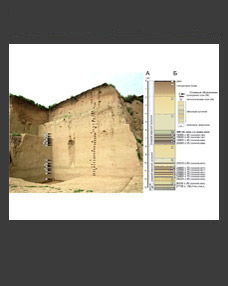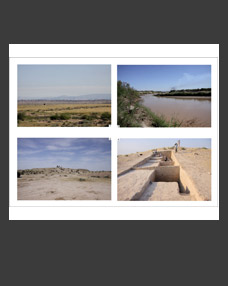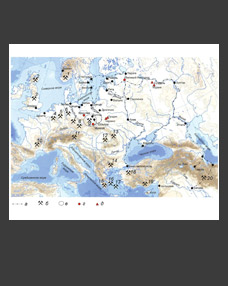Irina E. Zaitseva1,*, Eduard A. Greshnikov2,**, Aleksey A. Veligzhanin2,**, Aleksandr S. Pakhunov1,*, Pavel V. Dorovatovsky2,**, Nataliya N. Kolobylina2,**, Konstantin M. Podurets2,**, Ekaterina S. Kovalenko2,**, Mikhail M. Murashev2,**, Viktor P. Glazkov2,**, Ekaterina B. Yatsishina2,**
1Institute of Archaeology RAS, Moscow, Russia
2National Research Center “Kurchatov Institute”, Moscow, Russia
*E-mail: izaitseva@yandex.ru; science@pakhunov.com
**E-mail: levkon1963@yandex.ru; alexey.veligzhanin@gmail.com; paulgemini@mail.ru; kolobylina@gmail.com; Podurets_KM@nrcki.ru; kovalenko_es@mail.ru; mihail.mmm@inbox.ru; Glazkov_VP@nrck.ru; yatsishina_ eb@nrcki.ru
Keywords: Rus, encolpion crosses, niello technology, chemical composition of niello.
This article presents the results of comprehensive studies of the niello composition and the technique of its application in brass reliquary crosses of Rus of the 12th–13th cent. AD from unfortified medieval dwelling sites on the area known as Suzdal Opolye (Russia). The decor was applied as an inlay. The niello images of the cross in the centre of the leaves of two medieval encolpions are unusual as they include “green” and “black” inlays. They were studied with a combination of X-ray synchrotron methods, neutron tomography, scanning electron and optical microscopy. The data suggest that niello was made by melting of the multicomponent copper-based alloys with sulphur without deliberate admixing of silver. The corrosion products of “copper” niello (brochantite, anglesite and others) were detected in “green” inlays of the reliquary crosses.
DOI: 10.31857/S086960630005670-6







